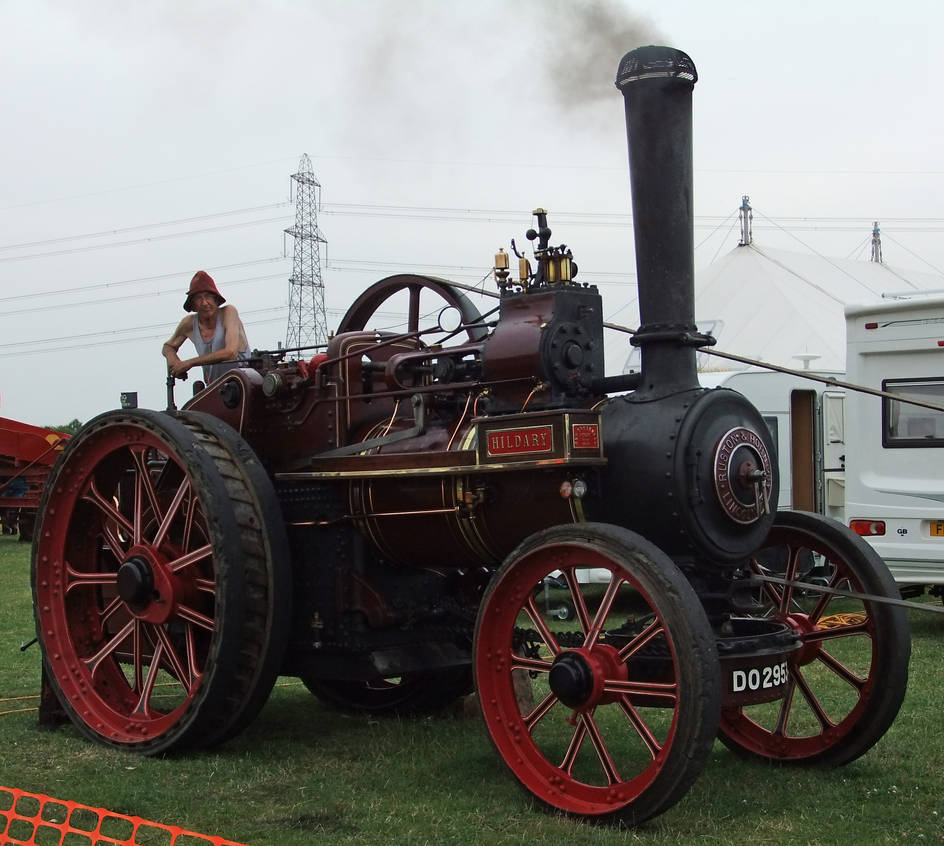Boston is a city where history feels alive, with many of its oldest parts offering glimpses into America’s earliest days. Walking through Boston, you encounter sites that have witnessed pivotal moments in the country’s journey—from the seeds of revolution to the evolution of industry. These historic spots, some dating back almost 400 years, reveal stories of resilience, patriotism, and innovation. From the cobbled streets of Beacon Hill to the iconic halls of Faneuil Hall, each place reflects a piece of Boston’s past. Together, they showcase why Boston remains a cornerstone of American heritage, inviting visitors to step back in time while exploring a vibrant modern city.
Boston Common
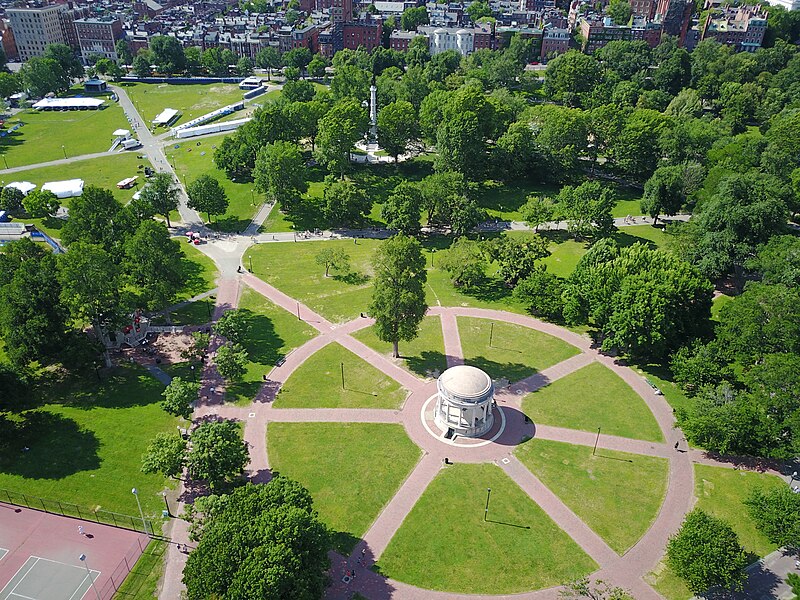
Dating back to 1634, Boston Common is the oldest public park in the United States. Initially used as a grazing area for livestock, this 50-acre park has evolved into a beloved green space for locals and tourists alike. Over the centuries, it served various purposes, including hosting public speeches, protests, and military gatherings. The Common has also been a central space for community events, concerts, and even ice skating in winter. Its beautiful walkways and scenic views make it a serene escape from the city’s bustle. Historically, the park played a role in the American Revolution, as British troops encamped here before the Battle of Lexington and Concord. Today, Boston Common stands as a testament to Boston’s rich history and enduring community spirit.
Old State House
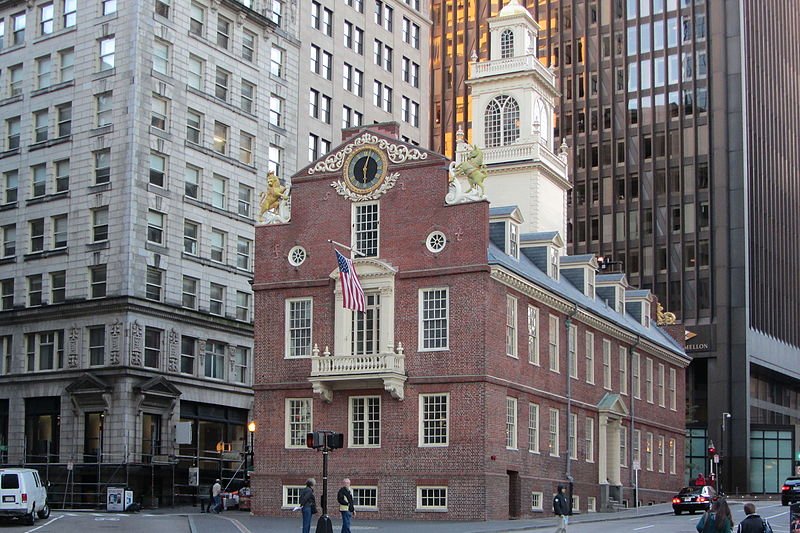
Constructed in 1713, the Old State House is one of Boston’s oldest and most historically significant buildings. As the seat of the Massachusetts General Court until 1798, it played a pivotal role in the early political life of the American colonies. The building famously witnessed the Boston Massacre, as British soldiers opened fire on civilians outside its walls in 1770. This event intensified colonial opposition to British rule and ignited revolutionary fervor throughout New England. Today, the Old State House is a museum, preserving artifacts and stories from Boston’s revolutionary era. With its striking architecture, it offers a unique glimpse into 18th-century colonial life. Visitors can stand in the very spot where pivotal moments in American history unfolded.
Paul Revere House
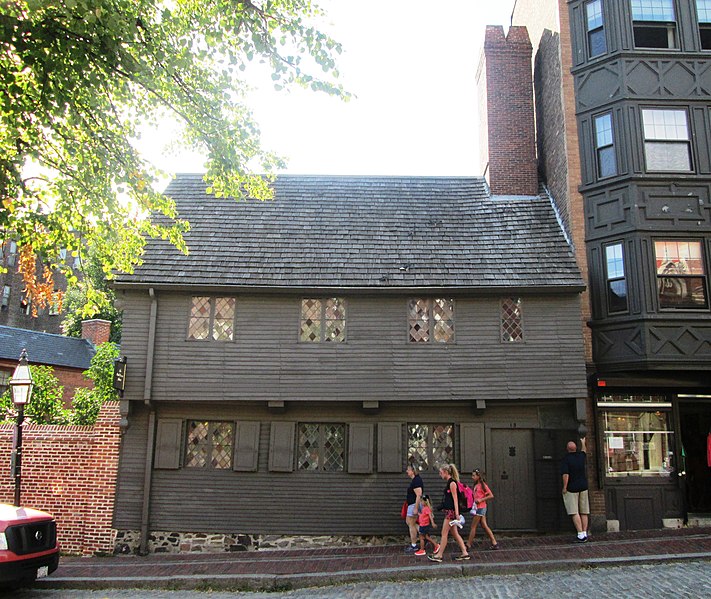
Built in 1680, the Paul Revere House is the oldest remaining structure in downtown Boston. This modest wooden home was where Paul Revere lived with his family and embarked on his famous midnight ride in 1775. Restored in the early 1900s, it serves as a museum, allowing visitors to step into a well-preserved piece of colonial America. The house’s low ceilings, narrow staircases, and simple furnishings capture the living conditions of the period. Throughout the years, it has remained a symbol of Revere’s bravery and patriotism. The Paul Revere House offers insight into the everyday life of a true American patriot. Today, it stands as a quiet homage to one of Boston’s most celebrated residents.
King’s Chapel
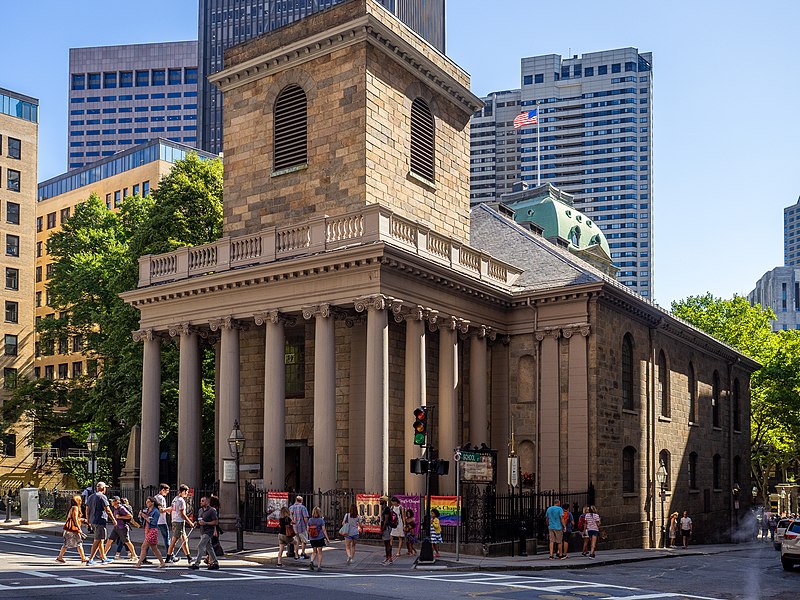
Founded in 1686, King’s Chapel is Boston’s oldest standing church, originally established for Anglican worship. The current stone structure, completed in 1754, replaced an earlier wooden building and reflects colonial architecture with Georgian influences. King’s Chapel has a unique connection to American history, as it maintained loyalist affiliations during the Revolutionary War. Its pews, crafted with mahogany imported from the Caribbean, showcase the craftsmanship of the time. Today, it is a Unitarian Universalist congregation and also a historical landmark open for tours. King’s Chapel’s bell, cast by Paul Revere’s foundry, is still rung today, adding a rich auditory connection to Boston’s past. Its atmosphere and history create a reverent experience for all who enter.
Faneuil Hall
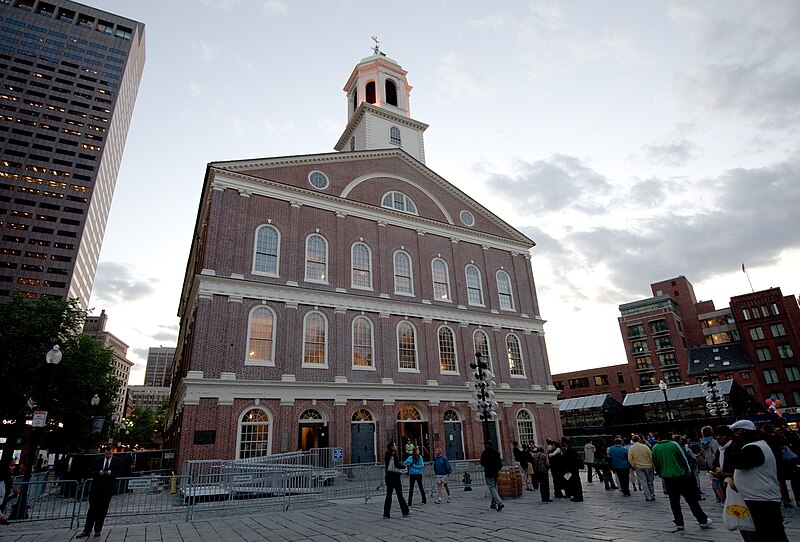
Built in 1742, Faneuil Hall has served as a marketplace and meeting hall for nearly 300 years. Often called the “Cradle of Liberty,” this historic building witnessed many debates and speeches during the American Revolution. Figures like Samuel Adams and James Otis rallied colonists here, inspiring them toward independence from Britain. Faneuil Hall’s architecture, with its iconic cupola, reflects the colonial style that dominates Boston’s historical landmarks. While it has been expanded and restored, it still retains much of its original character. Today, Faneuil Hall remains a central part of Boston’s bustling marketplace district. Both a landmark and an active gathering place, it continues to attract visitors eager to walk in the footsteps of revolutionaries.
Old North Church

Completed in 1723, the Old North Church is Boston’s oldest surviving church building. Known for its pivotal role in the Revolutionary War, it was from this steeple that lanterns were famously hung, signaling Paul Revere’s ride. The church’s tall, white spire and red-brick architecture make it a striking feature in Boston’s North End. Inside, the church has remained largely unchanged, with wooden pews and box seats that harken back to the 18th century. Today, it functions both as a place of worship and a historical site, drawing thousands of visitors each year. Walking through the Old North Church, one can feel the weight of history in its quiet, candle-lit spaces. Its role in American history makes it an enduring symbol of the fight for freedom.
Old Corner Bookstore
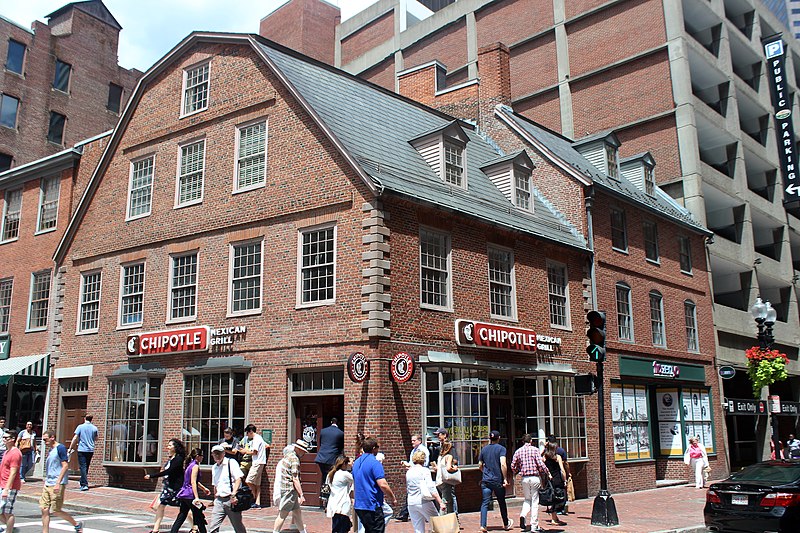
Built in 1718, the Old Corner Bookstore stands as Boston’s oldest commercial building and once was a literary hub. This charming brick structure became a bookstore and publishing house in the 19th century, fostering literary giants like Nathaniel Hawthorne and Ralph Waldo Emerson. It later published works by Henry David Thoreau and Harriet Beecher Stowe, cementing its place in American literary history. Over the years, the Old Corner Bookstore narrowly avoided demolition but has been preserved to retain its historic charm. Today, it is a testament to Boston’s rich cultural and intellectual heritage. Although now occupied by a retail tenant, it remains a beloved landmark. The bookstore’s legacy endures as a cherished memory of Boston’s vibrant literary past.
Granary Burying Ground
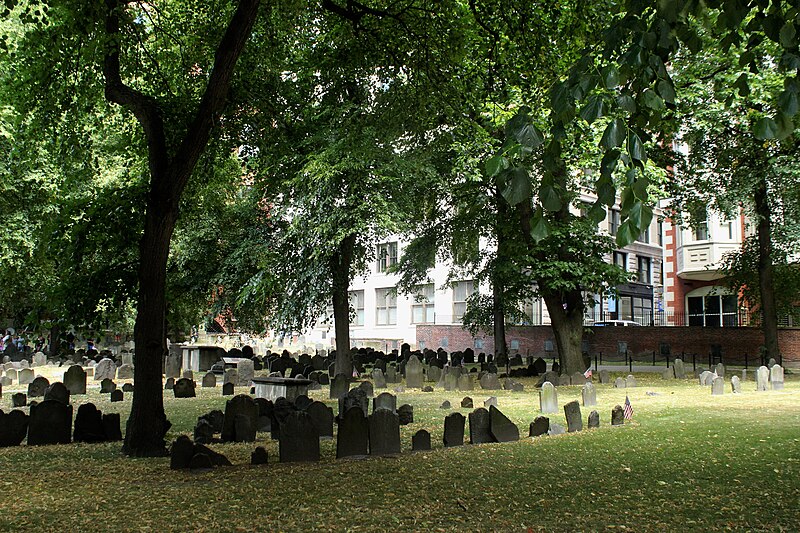
Established in 1660, Granary Burying Ground is Boston’s third-oldest cemetery, containing the graves of many notable early Americans. Famous figures like Samuel Adams, John Hancock, and Paul Revere are buried here, making it a popular destination for history enthusiasts. With its weathered gravestones and tranquil atmosphere, the cemetery evokes the solemn beauty of Boston’s colonial past. The carvings on the headstones, featuring winged skulls and other early American symbols, are a reminder of the 17th-century Puritan mindset. Throughout its long history, the Granary Burying Ground has survived urban expansion and weathered the elements. Walking among its ancient graves offers a poignant connection to the city’s early residents. It remains a hallowed ground, offering insight into Boston’s storied past.
Copp’s Hill Burying Ground
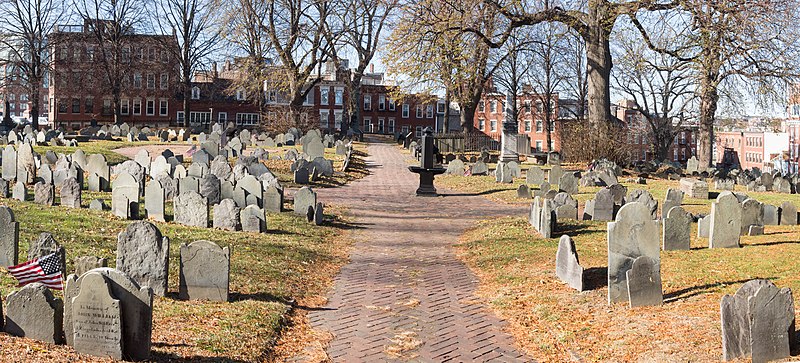
Dating back to 1659, Copp’s Hill Burying Ground is Boston’s second-oldest cemetery and overlooks the North End. Once a wind-swept hill, it became the final resting place for thousands of Bostonians, including merchants, artisans, and Puritans. During the Revolutionary War, British soldiers used the cemetery as a vantage point for their cannons, aiming at Charlestown. The headstones, marked with intricate carvings, tell stories of Boston’s colonial life and early families. Today, Copp’s Hill is a peaceful spot where visitors can enjoy views of the Charles River and Charlestown. Its preservation allows one to feel the continuity of Boston’s history in this quiet corner. The historic significance of Copp’s Hill continues to draw visitors and historians alike.
Charlestown Navy Yard
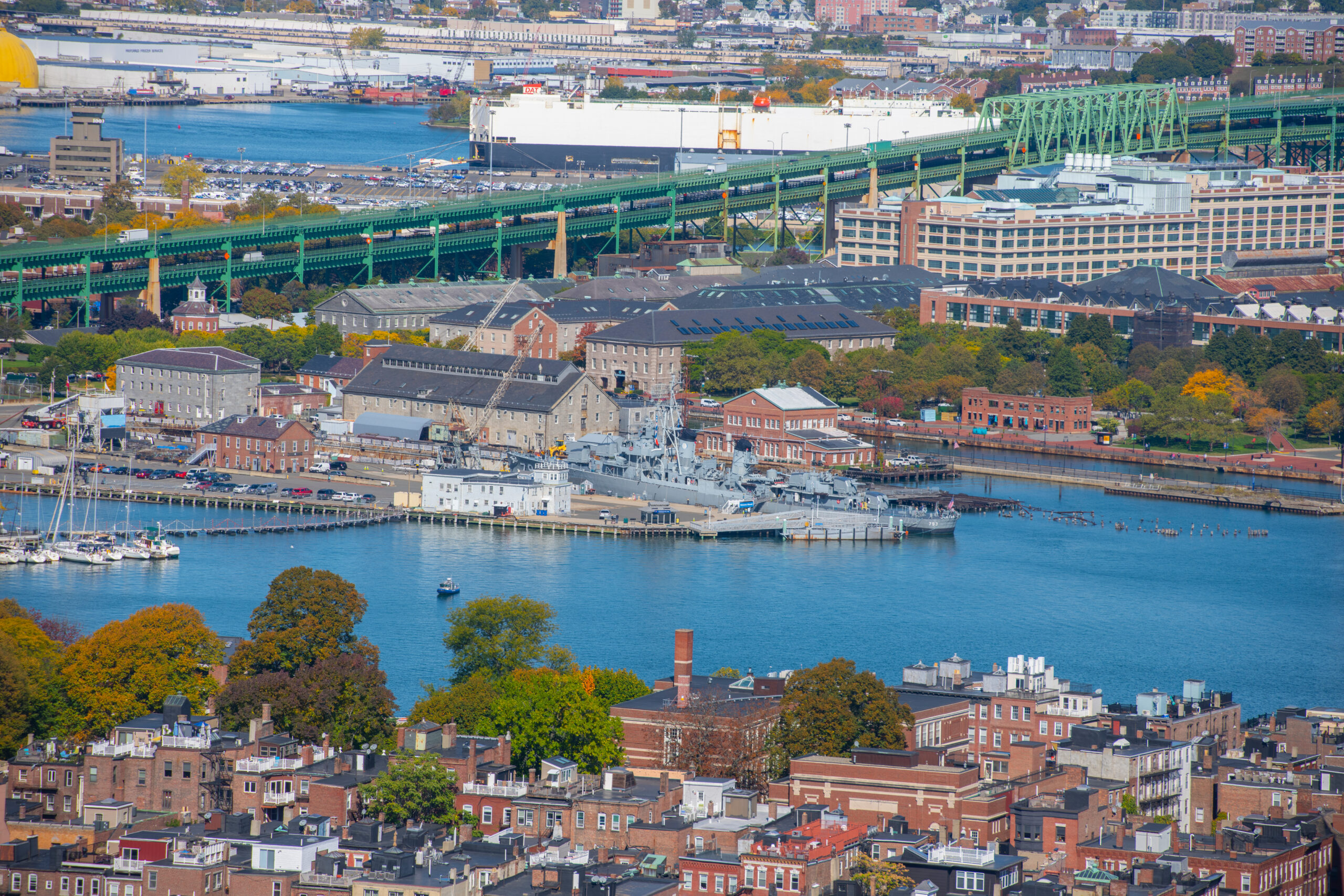
Established in 1800, the Charlestown Navy Yard served as a critical shipbuilding facility and remains one of Boston’s oldest federal properties. During its peak, the yard produced and repaired ships that played pivotal roles in both the War of 1812 and the Civil War. It’s home to the USS Constitution, the oldest commissioned naval vessel afloat, and the USS Cassin Young, a World War II destroyer. The Navy Yard is now part of the Boston National Historical Park, with preserved structures and exhibits that illustrate its storied past. Visitors can explore the dry docks, commandant’s house, and naval warehouses that once bustled with activity. Today, it’s a serene site where Boston’s maritime history comes alive. The Charlestown Navy Yard serves as a reminder of Boston’s naval heritage and resilience.
Boston Latin School Site

Founded in 1635, the Boston Latin School is the oldest public school in the United States. Originally located on School Street, its site is now marked by a statue and historical plaque. The school educated several prominent American figures, including Benjamin Franklin, John Hancock, and Samuel Adams. Although the original building no longer stands, its legacy endures as a symbol of Boston’s commitment to education and public service. The current Boston Latin School continues this tradition, though it’s moved to a different location. Visiting the original site on School Street, one can imagine the early days of American education in colonial Boston. The site serves as a powerful reminder of Boston’s early intellectual roots.
The Bell-in-Hand Tavern
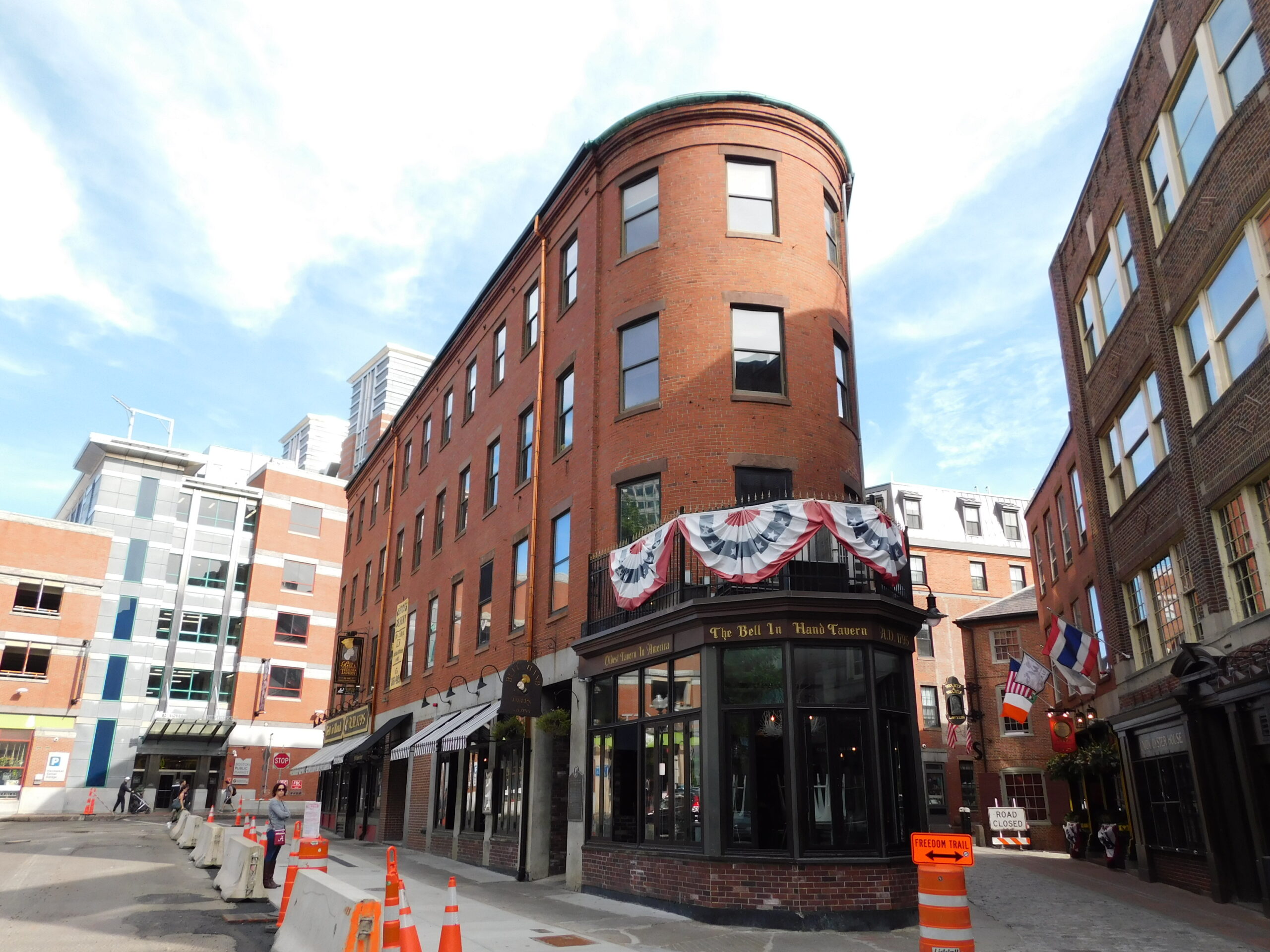
Established in 1795, the Bell-in-Hand Tavern is one of the oldest continuously operating bars in the United States. Founded by Boston’s last town crier, Jimmy Wilson, the tavern earned its name from his tradition of ringing a bell while announcing news. The original location was a popular meeting spot for locals to discuss politics, news, and daily affairs over a pint. Over the centuries, it has moved locations but retained its historic atmosphere and reputation as a gathering place. Today, it offers a mix of history and modern charm, attracting patrons looking for a piece of Boston’s past. With its traditional decor and inviting ambiance, the Bell-in-Hand Tavern connects visitors to Boston’s social history. It remains a lively testament to the city’s enduring spirit of community.
The Green Dragon Tavern
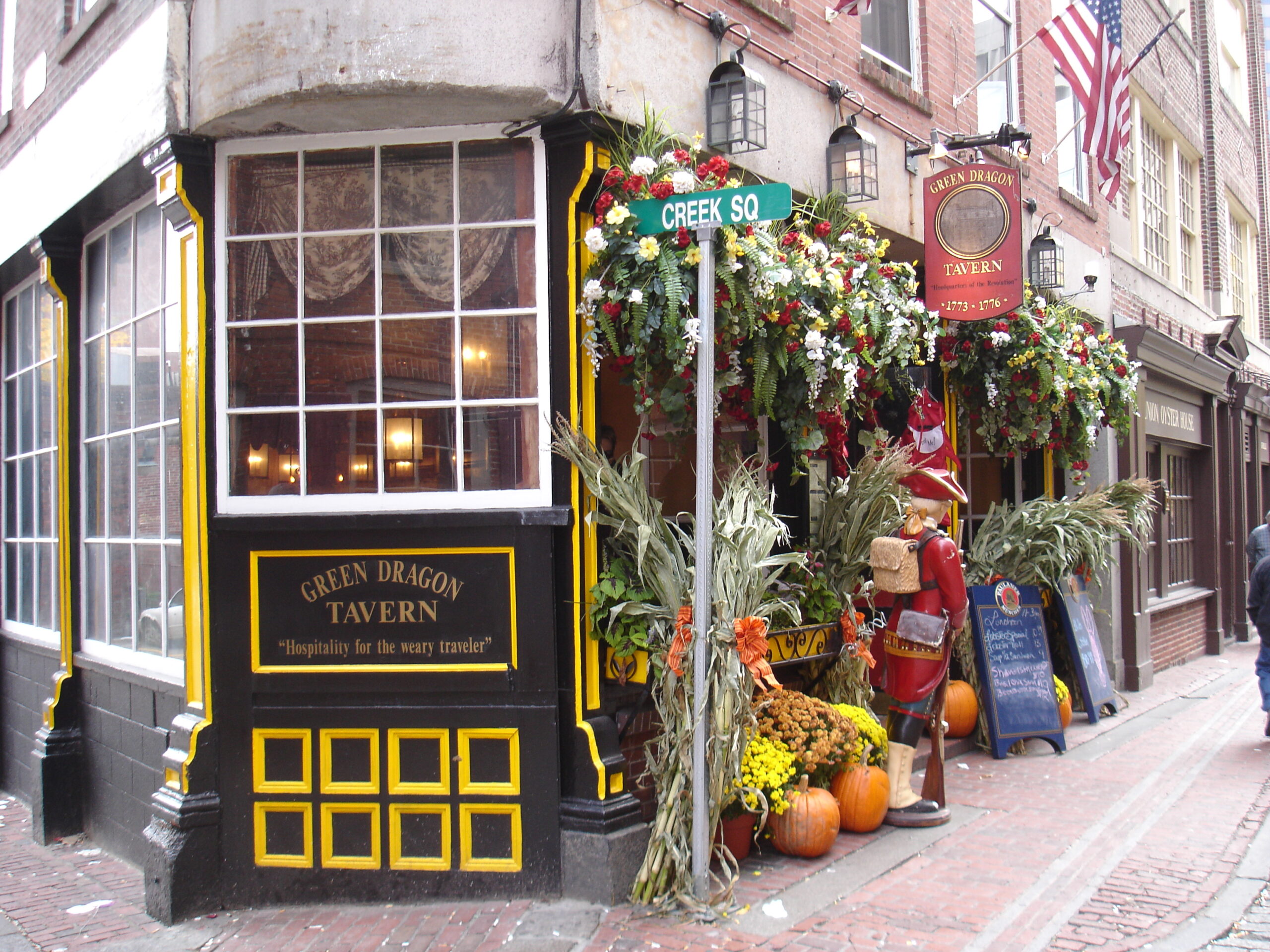
The original Green Dragon Tavern, established in 1654, was known as the “Headquarters of the Revolution” due to its role as a meeting spot for revolutionaries. Key figures like Paul Revere, John Hancock, and the Sons of Liberty held secret meetings in the tavern’s basement. From here, the famous midnight ride of Paul Revere was planned, warning colonists of British troop movements. Although the original building was demolished in 1854, its legacy is celebrated by a modern tavern bearing the same name. The current Green Dragon Tavern, located nearby, honors its historical significance with colonial-style decor. Visiting today, one can enjoy a meal in a place that echoes Boston’s revolutionary spirit. The legacy of the Green Dragon lives on as a reminder of the city’s role in America’s fight for independence.
Long Wharf
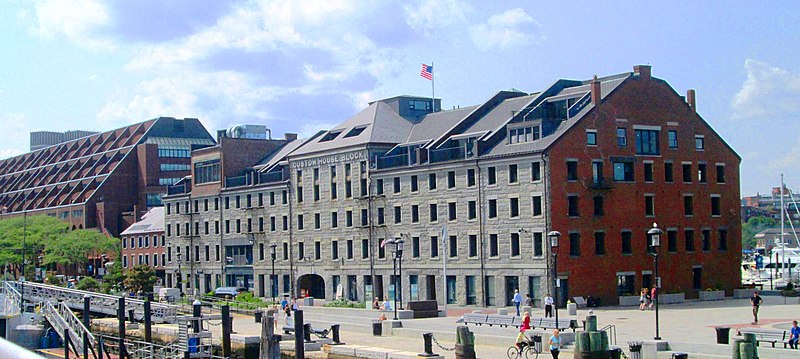
Built in 1710, Long Wharf was once the busiest port in colonial America, bustling with merchants, fishermen, and traders. Stretching nearly half a mile into Boston Harbor, the wharf allowed large ships to dock directly in the city, facilitating trade and commerce. During the American Revolution, British troops occupied Long Wharf, using it as a strategic point. The wharf’s importance continued into the 19th century, with warehouses, shops, and customs offices lining its length. Although much of the original structure has been modernized, remnants of its colonial-era foundation remain visible. Today, Long Wharf is a scenic promenade with restaurants and attractions that draw visitors to Boston’s waterfront. Its historic importance is still felt as it remains a link to Boston’s maritime heritage.
Beacon Hill
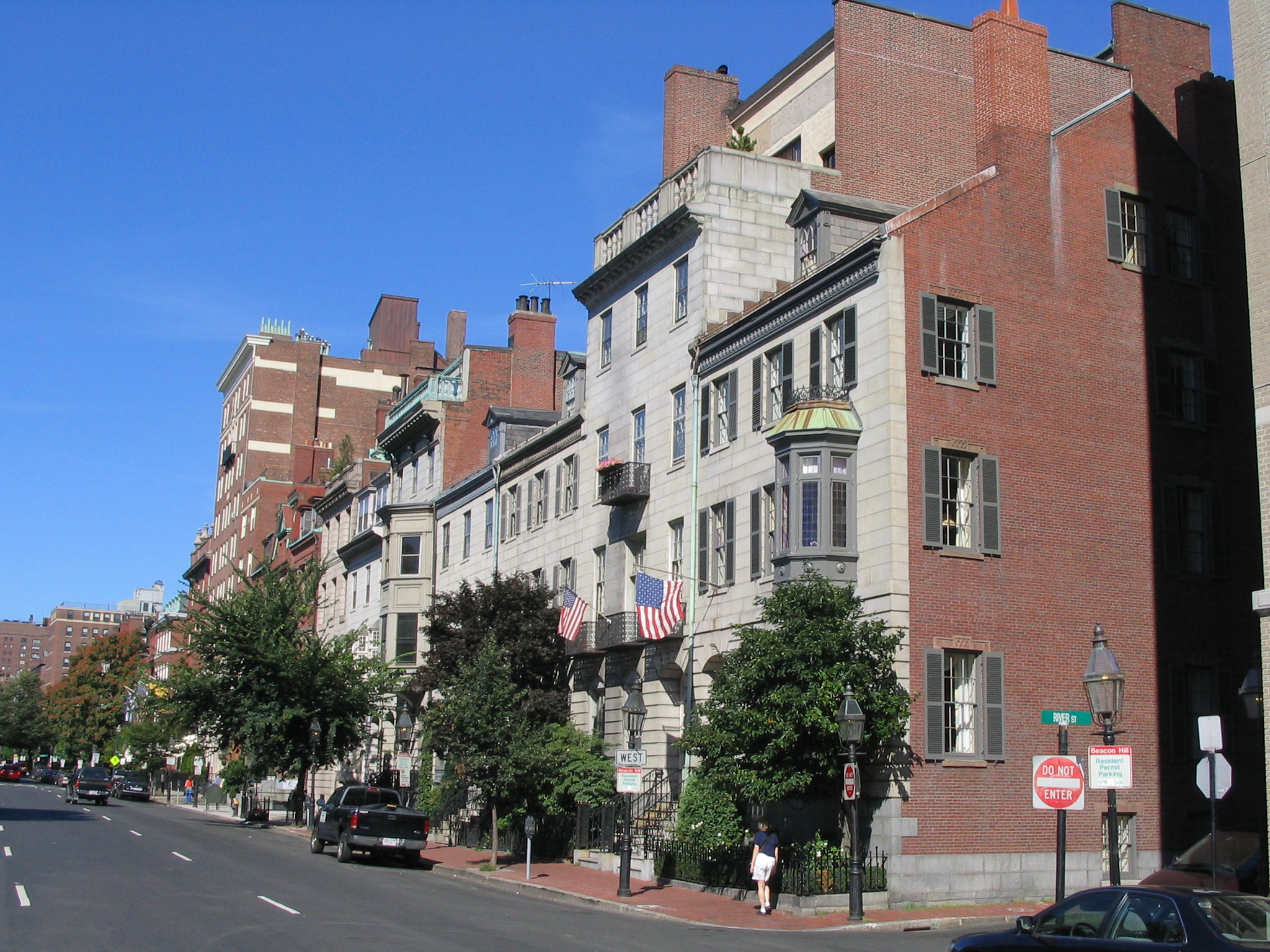
One of Boston’s most iconic neighborhoods, Beacon Hill was first settled in the early 17th century and became a residential area by the 1790s. Originally a pasture land known as Sentry Hill, it later transformed into a distinguished neighborhood with brick row houses and gaslit streets. Wealthy Bostonians, including influential families like the Hancocks, built stately homes here, making it a center of social and political life. Beacon Hill’s narrow, cobblestone streets and historic architecture give it an old-world charm. The neighborhood is now a National Historic Landmark, protected to preserve its unique character. Walking through Beacon Hill, visitors can admire its picturesque buildings and hidden courtyards. Its blend of colonial and Federal-style architecture provides a glimpse into Boston’s affluent past.
The Custom House Tower
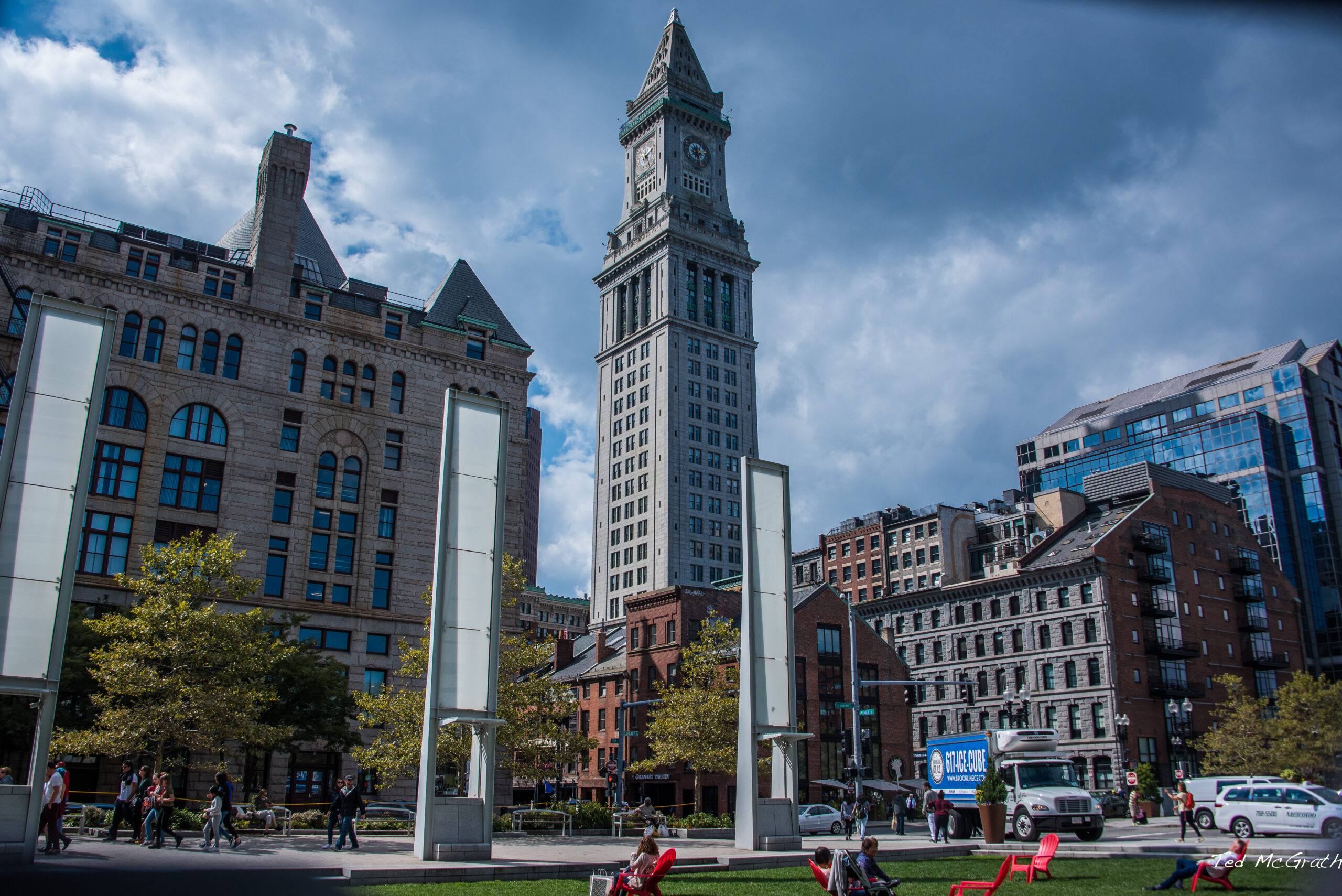
Originally constructed in 1849 as a customs office, the Custom House Tower became one of Boston’s earliest skyscrapers when its iconic tower was added in 1915. This Neoclassical structure represented the city’s growing status as a major port in the United States. For years, it was Boston’s tallest building, symbolizing the city’s economic prosperity. Today, the tower houses a luxury hotel, yet its historic charm remains preserved. The iconic clock tower and detailed facade make it one of Boston’s most recognizable landmarks. Visitors can tour the observation deck for panoramic views of Boston Harbor and the cityscape. The Custom House Tower remains a symbol of Boston’s rich mercantile heritage.
Fort Independence
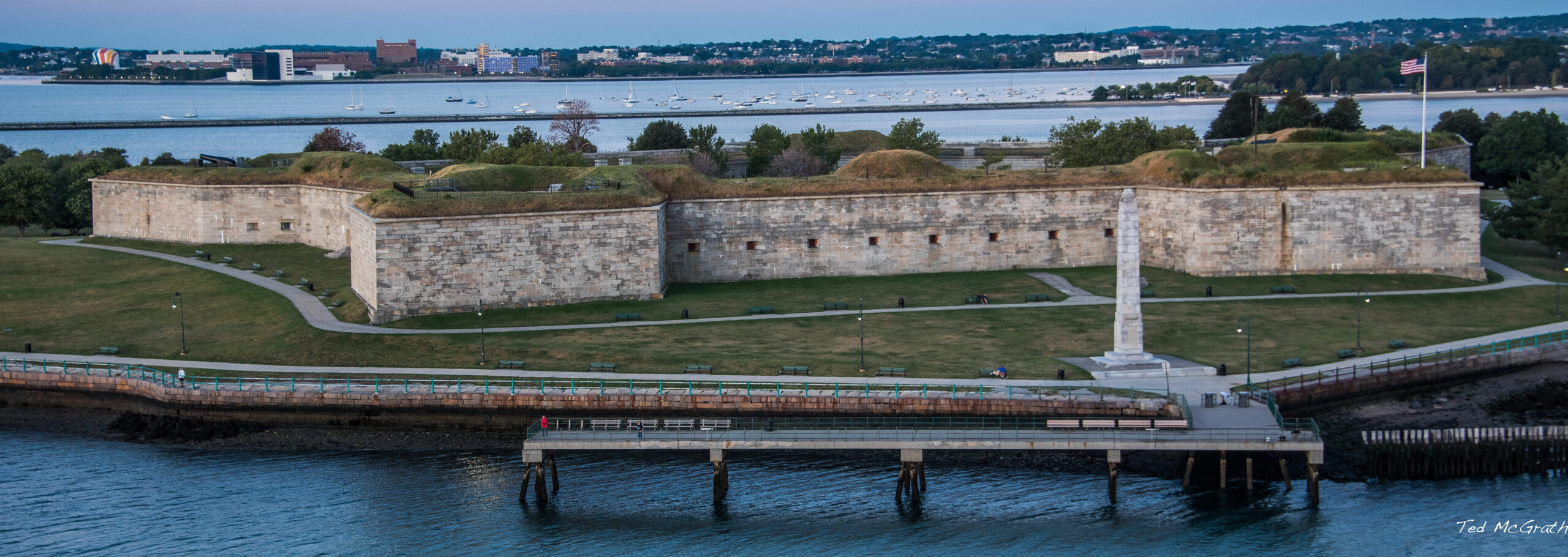
Located on Castle Island, Fort Independence has been guarding Boston Harbor since 1634, making it one of the oldest military fortifications in the United States. Reconstructed several times, the current granite structure was completed in 1851. It served as a military defense post through several wars, including the War of 1812 and the Civil War. Fort Independence is surrounded by legends, including one about Edgar Allan Poe, who allegedly wrote “The Cask of Amontillado” based on a tale from this fort. Today, it’s a popular historic site for visitors to explore, with self-guided tours available during summer. The fort’s panoramic views of Boston Harbor offer a scenic connection to its storied military past. Its walls, once a defense line, now stand as a peaceful reminder of Boston’s enduring resilience.
The Union Oyster House
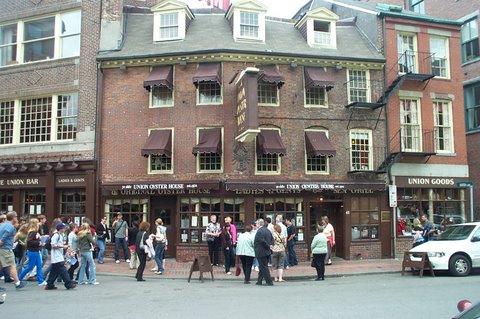
Established in 1826, the Union Oyster House is America’s oldest continuously operating restaurant. The restaurant’s charming, creaky wooden floors and historic decor evoke the early 19th-century Boston dining experience. Known for its oysters and New England clam chowder, it became a favorite of prominent figures, including Daniel Webster and John F. Kennedy. The building itself dates back to the 1700s and has seen various uses over the centuries, including as a dressmaker’s shop. Today, the Union Oyster House remains a cherished landmark, blending rich history with authentic New England cuisine. Its dining rooms, filled with old photos and memorabilia, provide a glimpse into Boston’s culinary heritage. Enjoying a meal here is like taking a step back in time.
Bunker Hill Monument

Completed in 1842, the Bunker Hill Monument commemorates the Battle of Bunker Hill, one of the first major battles of the American Revolution. Standing 221 feet tall, this granite obelisk marks the site where colonial forces held their ground against British troops. The battle, though a technical loss for the colonists, demonstrated their resilience and marked a significant point in the Revolution. Visitors can climb the 294 steps to the top for a sweeping view of Boston and the harbor. The surrounding park and visitor center offer insights into the battle and its impact on American history. As a historic site, the Bunker Hill Monument stands as a powerful symbol of courage and sacrifice. Its towering presence is a testament to Boston’s role in the fight for independence.
Massachusetts State House
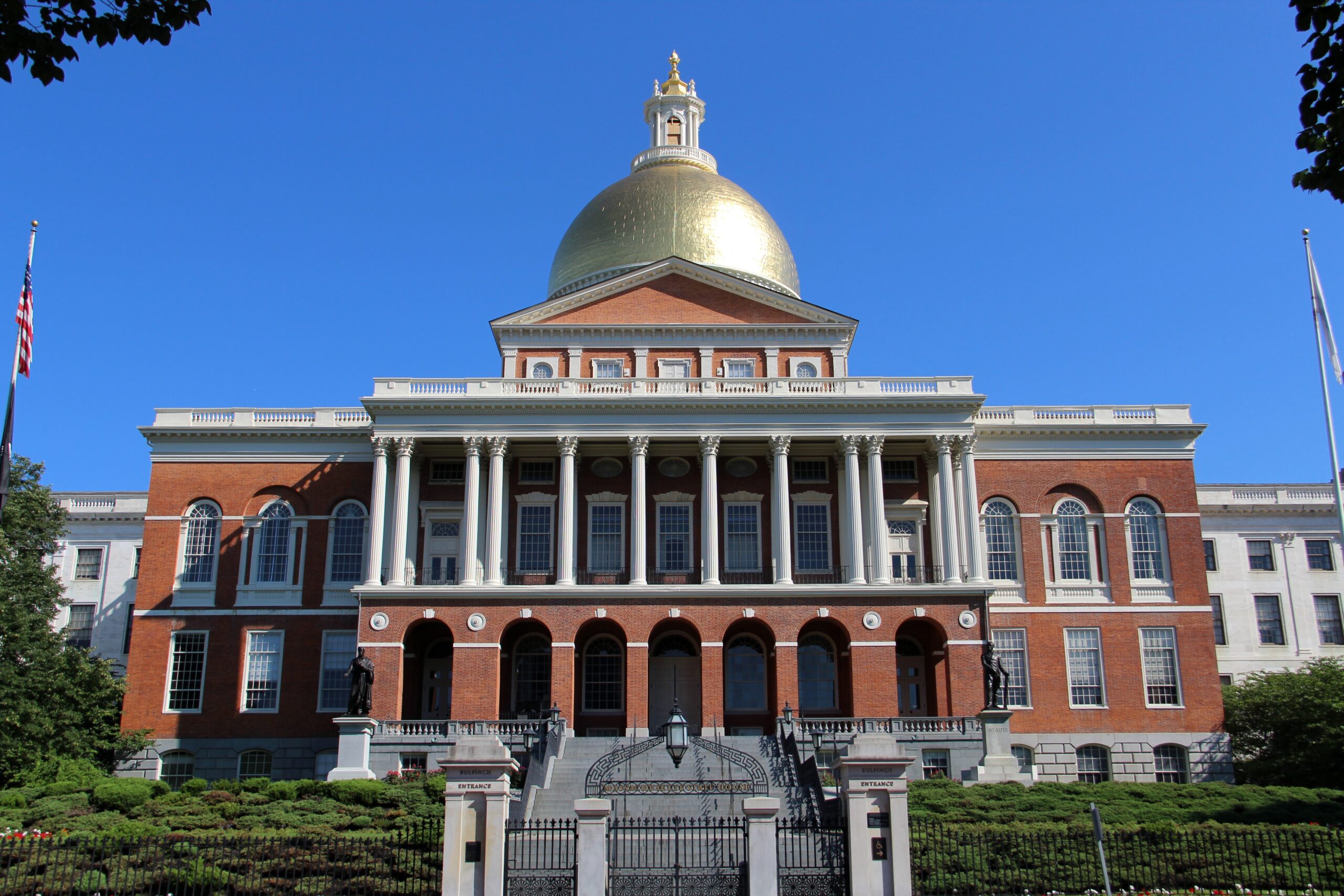
Designed by architect Charles Bulfinch and completed in 1798, the Massachusetts State House is one of the oldest state capitol buildings still in use. Its golden dome, initially made of wood and later gilded, is one of Boston’s most recognizable landmarks. The State House has been the center of Massachusetts government for over two centuries, overseeing events from state legislation to national political developments. The building’s architecture, with its grand rotunda and marble hallways, reflects early American style and craftsmanship. Inside, visitors can tour historic chambers and view murals depicting significant events in Massachusetts’ history. Over the years, it has undergone various restorations to preserve its beauty and historical importance. The State House remains a vibrant symbol of Boston’s enduring legacy in American governance.
This article originally appeared on Rarest.org.
More From Rarest.Org
The United States is home to some of the largest colleges in the world, both in terms of student population and campus size. These universities offer diverse academic programs, cutting-edge research opportunities, and vibrant campus cultures that attract thousands of students every year. Read more
Technology has always been a driving force behind progress, but some innovations have had a truly transformative impact on entire industries. From the steam engine that powered the Industrial Revolution to modern breakthroughs like blockchain and 3D printing, these game-changing inventions have reshaped how we work, communicate, and live. Read more
The NFL is home to some incredible athletes who have defied the odds to keep playing well into their 30s and 40s. These seasoned players continue to showcase their skills, proving that age is just a number. Read more


